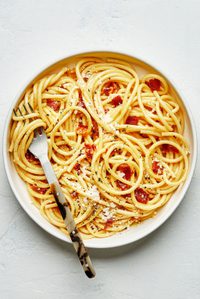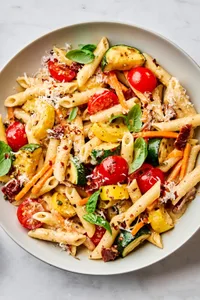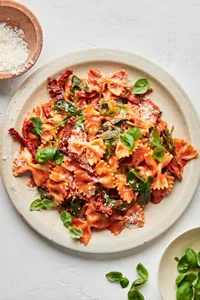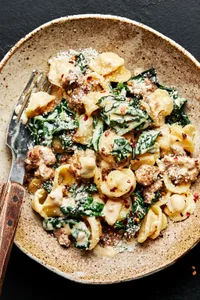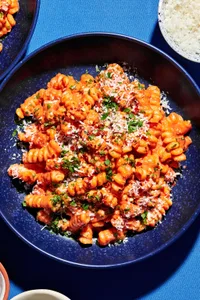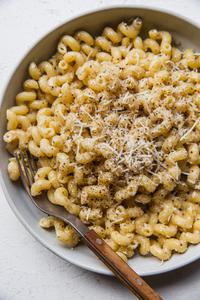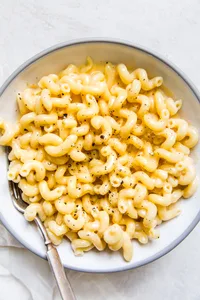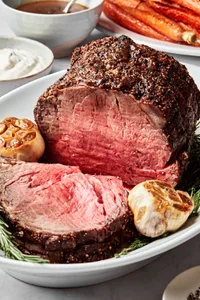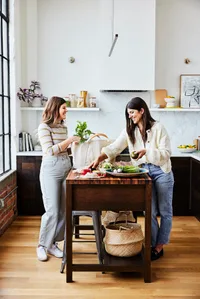My perfect pasta carbonara recipe is all you need to make one of Italy’s greatest pasta dishes at home. Carbonara is creamy, but it is made without cream. Instead of heavy cream, a combination of cheese, cured pork and egg yolks come together to make a creamy pasta sauce in a process that feels like magic!

Egg yolks swirled together with cheese, starchy pasta water and lots of rendered pork fat make the classic rich and creamy carbonara sauce. Pasta carbonara is time-tested, quick and decadent. Craving creamy vegetarian pasta? Try Cacio E Pepe, Creamy Cavatappi or Pasta Primavera.
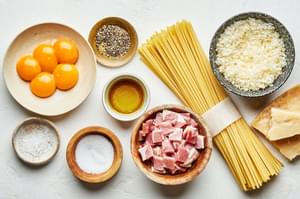
4 Key Ingredients For Real Pasta Carbonara
- Pasta: Spaghetti, linguine or bucatini are classic carbonara pasta shapes. Cooked al dente.
- Cheese: Pecorino Romano is the classic Roman cheese and the most traditional cheese for carbonara. If you prefer Parmesan, it works fine. Whichever you use, DO NOT buy pre-shredded cheese. Grate it freshly with a microplane grater so that it melts seamlessly into the creamy carbonara sauce.
- Guanciale: Guanciale is Italian cured pork cheek. Fatty and salty, it’s the classic meat for carbonara sauce. If you can’t find guanciale or it’s not in your budget right now, pancetta or thick-cut bacon work well as a substitute.
- Eggs: Use just the egg yolks, and use the best quality eggs you can get.
- Black pepper: With so many heavy, rich ingredients, freshly cracked black pepper gives a much needed lift.
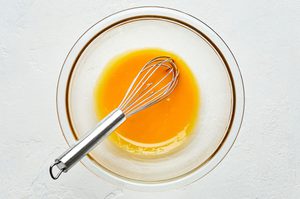
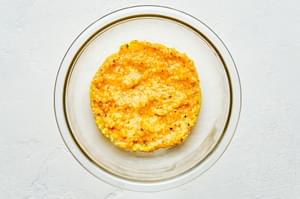
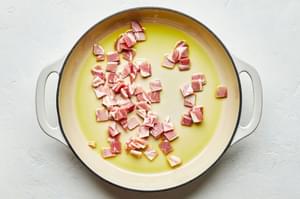
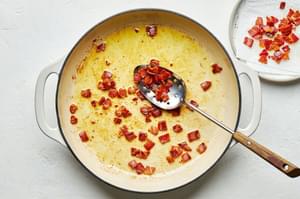
How To Make Carbonara
- Boil the pasta until it is al dente.
- Brown the guanciale. BTW, whether you’ve got guanciale, pancetta or thick-cut bacon, cutting it into little cubes is the traditional way to prep it.
- Whisk the egg yolks and grated cheese together and let it come to room temperature while you prep the rest of the stuff.
- Add starchy pasta water to rendered pork fat in the pan where you browned the guanciale. Simmer the pasta in that fat-water for two minutes.
- Stir the pasta with tongs and, slowly, stir in the egg-cheese mixture. It’s happening! You’re making carbonara!
- Add the guanciale to the pasta carbonara and eat immediately!
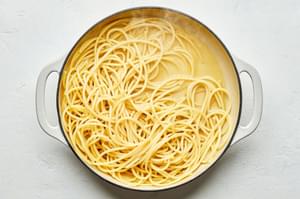
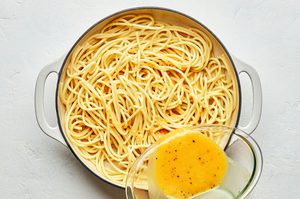
Tips For Pasta Carbonara Success
The key to making creamy pasta carbonara sauce is to have the correct technique. You’ve got this!
Here are the keys to carbonara success:
- DO slowly render the fat from the guanciale: Particularly if you’re using guanciale, LOTS of fat will come out when you sauté it. You need that rendered fat to make the carbonara sauce work. So, brown the cured pork over medium heat instead of high heat is important. Slightly lower heat allows more fat to render out.
- Do NOT scramble the egg yolks: When making carbonara sauce, everyone is scared that they’re going to scramble the eggs. Focus on “gentle heat,” as you cook. Go gentle with the heat and you should be OK.
- DO temper the egg yolks with some warm pasta cooking water before combining them with the noodles and guanciale. Introducing heat slowly is the key to making the sauce creamy without any cream.
- DO keep the eggs moving constantly once you begin to introduce them to heat.
- DO cook the pasta carefully. Start by salting the pasta water, and cook the pasta to al dente perfection and not a minute longer.
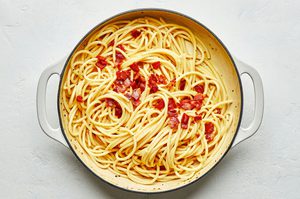

Carbonara FAQs
- How do I store leftovers? Leftover carbonara can be stored in the fridge for up to three days. Reheat it gently in a pan over medium-low heat until it’s warmed through.
- Are the eggs in pasta carbonara raw? The eggs in carbonara sauce are not fully cooked, so you’ll need to decide if that is OK with you. If you need to avoid eggs that are not cooked all the way through, you might love creamy Cacio e Pepe instead.
- What to serve with carbonara: It’s nice to serve a salad on the side (maybe a Simple Butter Lettuce Salad) to lighten up a rich meal.
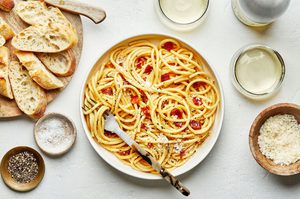
More Easy Pasta Ideas
You’ve Mastered Carbonara! What's Next?
For more recipe inspiration, follow us on Facebook, Instagram, TikTok and Pinterest or order our cookbook. We love when you share your meals. Tag us on Instagram using #themodernproper, and we’d love to hear what you think of this recipe in the comments below. Happy cooking!
